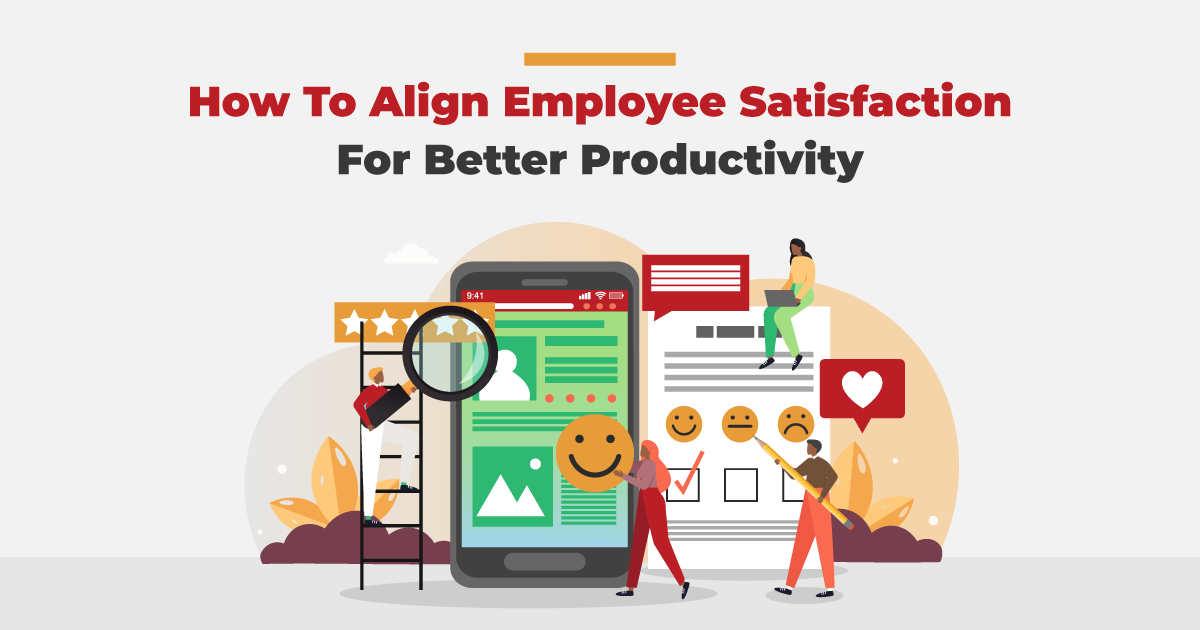Employee satisfaction is key to the success of any company. Happy employees lead to productive employees, and productive employees mean a successful business. Unfortunately, many companies struggle to find ways to bridge the gap between employee satisfaction and productivity.
Here, we’ll discuss some strategies that you can use to improve employee satisfaction and create a more productive workplace environment.
Table of Contents
What is employee satisfaction and why is it important?
The first step to improving employee satisfaction is understanding what it is and why it’s important. Employee satisfaction can be defined as the level of contentment that an employee feels with their job.
This includes factors such as pay, workload, company culture, and more.
Companies need to focus on employee satisfaction because happy employees lead to a more productive work environment. When employees are satisfied with their jobs, they are more likely to be engaged in their work and less likely to experience burnout.

There are several ways that you can improve employee satisfaction within your company. Some of these include:
Offering competitive salaries and benefits: Employees want to feel like they are being compensated fairly for the work that they do. Offering competitive salaries and benefits can help to improve employee satisfaction and motivation.
Creating a positive work environment: A positive work environment is conducive to productivity and creativity. This means having a clean and organised workspace, providing employees with the resources they need to do their jobs, and fostering an atmosphere of respect and collaboration.
Encouraging work-life balance: Work-life balance is important for both employees and employers. When employees feel like they have a good balance between their work life and personal life, they are more likely to be satisfied with their job. Employers should encourage employees to take breaks when needed, use vacation days, and not take work home with them.
What are the different factors that influence employee satisfaction?
There are a number of different factors that can influence employee satisfaction. These include:
Pay: Employees want to feel like they are being paid fairly for the work they do. Offering competitive salaries and benefits can help to improve employee satisfaction.
Workload: Employees should not be overloaded with work. This can lead to burnout and decreased productivity. Employers should ensure that employees have a manageable workload and provide them with the resources they need to complete their tasks.

Company culture: Company culture plays a big role in employee satisfaction. Creating a positive work environment is crucial for keeping employees happy and engaged in their work.
Respect: Employees should feel respected by their employers. This includes feeling like their opinions are valued, being treated fairly, and feeling like they are part of a team.
These are just a few of the different factors that can influence employee satisfaction. By understanding what these factors are, you can start to create a more satisfied and productive workforce.
How to measure employee satisfaction
There are some different ways that you can measure employee satisfaction. Some of the most common include:
Surveys: Surveys are a great way to get feedback from employees about their job satisfaction. You can either give them a general survey or ask specific questions about different aspects of their job.

Interviews: Interviews are another great way to get feedback from employees. You can conduct one-on-one interviews or hold group interviews.
Observation: Sometimes the best way to gauge employee satisfaction is to simply observe them at work. This can help you to see how they interact with their colleagues and how engaged they seem in their work.
Measuring employee satisfaction is essential for understanding the state of how happy and productive your employees are.
Strategies for improving employee satisfaction
Once you have a good understanding of the different factors that influence employee satisfaction, you can start to implement strategies to improve it. Some of the most common strategies include:
Improving communication: Communication is key in any workplace. Employees need to feel like they are able to openly communicate with their managers and colleagues. This includes being able to give feedback without fear of retribution.
Giving employees more autonomy: Employees want to feel like they have some control over their work. This means giving them the freedom to complete tasks in their own way and making decisions about their workday.
Encouraging development and growth: Employees want to feel like they are constantly learning and growing in their role. You can encourage this by providing opportunities for training and development, and by giving employees the chance to take on new responsibilities.
Improving employee satisfaction can lead to a number of benefits for your company. These include increased productivity, engagement, and retention.
By taking the time to understand the different factors that influence employee satisfaction and implementing strategies to improve it, you can create a happier and more productive workplace.
The benefits of a satisfied workforce
Several benefits come with having a satisfied workforce. Some of the most notable include:
Improved productivity: Satisfied employees are more productive employees. When employees are happy with their jobs, they are more likely to be engaged in their work and perform at a higher level.
Reduced turnover: Employee turnover is reduced because dissatisfied employees are more likely to leave their jobs. By keeping your employees satisfied, you can reduce turnover and save money on training and recruitment costs.
Increased engagement: Satisfied employees are more likely to be engaged in their work. This means they are more likely to be productive and do their best work.
Improved morale: A satisfied workforce is a happy workforce. When morale is high, it can have a positive impact on the whole company.
A satisfied workforce is essential for any company that wants to be successful. By taking steps to improve employee satisfaction, you can create a more productive and engaged workforce.
In turn, this will lead to many benefits for your company, including improved productivity and lower turnover rates. To achieve this goal, we assembled an expert team with decades’ worth of experience to provide strategies that will bridge the employee satisfaction gap for better alignment within the workplace environment. Book your slot now HERE.





